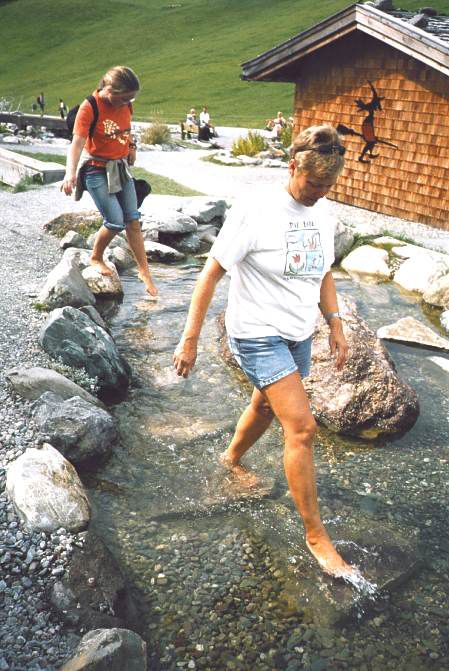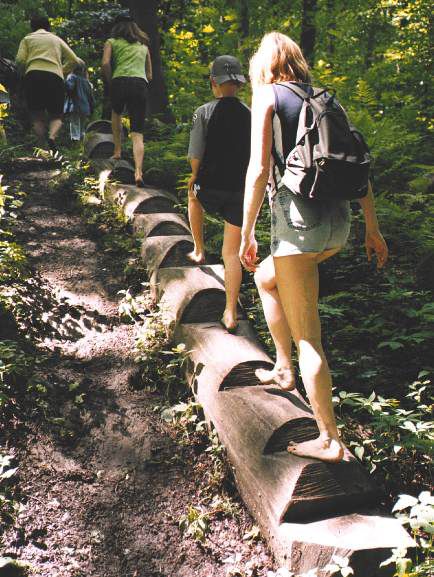You know how every once in a while you come across something that sounds so cool you would just love to try it? Well, I came across an article about Barefoot Parks today and felt just that way. After all, I am a podiatrist who has always said that feet need variety. The same shoes, walking surfaces – or even the same orthotics all the time stagnate the feet and seems to make it more difficult for the feet to adapt to changes. Besides walking barefoot can just feel wonderful!…walking on a beach and running through freshly cut grass as a kid come to mind…
Of course, as a responsible podiatrist, I always tell my patients not to go barefoot, especially if they are diabetics.
But what about an environment designed specially to go barefoot? Eliminate the hazards and enjoy the benefits — genius!!!
Here’s the article from “The Free Dictionary”:
Barefoot Parks

A barefoot park (also termed barefoot walk in the United Kingdom[1] or Barfußpfad [barefoot trail] in Germany) is a theme park for sensory experience and natural wellness. Such areas are kept clean and maintained on a regular basis, so that barefoot hiking can be done in an appropriate environment. Barefoot parks usually include a lot of adventure stations. Visitors use the experience to feel different soil textures underfoot; to wade through rivers, brooks, or ponds; and to exercise foot gymnastics, balancing and climbing. Playgrounds; bathing lakes; and equipment for smelling, hearing, and seeing different colors; and feeling hidden objects may be included.
Locations
Barefoot walks in Europe
The original concept of a barefoot park was first explored and developed in the 19th century by Sebastian Kneipp, one of the founders of the Naturopathic medicine movement. He believed that applying your feet to a different range of natural stimuli would have therapeutic benefits. This is also related to the ancient practice of reflexology, practiced in China for thousands of years for relaxation and to promote longevity.[2] One early barefoot park in Europe is Bad Sobernheim, where the first German barefoot walk was founded in 1992 to complement the spa activities at this health resort. Meanwhile an increasing number of barefoot parks have been founded in Germany, Austria, Switzerland and later on also in the Netherlands, Belgium, Denmark, France, the United Kingdom and Hungary. By Jan. 2010, the German directory www.barfusspark.info listed 70 recreational areas corresponding to the above definition. Typically these European barefoot walks are 500 – 5000 m long and situated either in spa gardens or outside in nature. In addition, numerous short variants of foot sensation trails are found in schoolyards, playgrounds etc.

Among the most popular European barefoot parks are those at Bad Sobernheim on the Nahe River, at Dornstetten in the Black Forest, at Lienen and Bad Wuennenberg in Westphalia. In addition the theme parks ‘Witches’ Water in Soell/Tyrol and the “Park with all Senses” at Gutach/Black Forest are designed as barefoot parks.
Reflexology paths in Asia
Some Asian towns offer their citizens barefoot walks within their parks and recreation areas. For example, Seoul reports having 158 barefoot parks[3]. The average length of about 50 m is considered adequate for relaxing and stimulating foot reflexes.
Source: